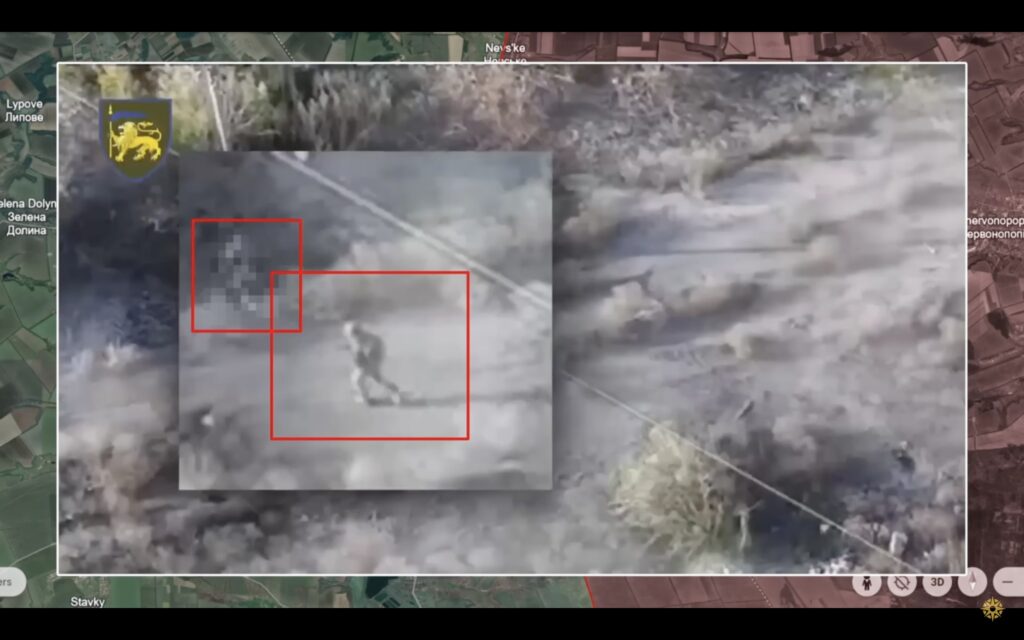Frontline report: Russians suffer high losses near strategic Terny due to poor planning and logistical challenges
Despite initial gains supported by intense aerial FAB-500 bombardments, Russian forces couldn't maintain their foothold in Terny, Donetsk Oblast, once their logistics chain stretched thin and Ukrainian drones decimated their armor, exploiting superior fire control from elevated positions west of the Zherebets River.


Today, we have a lot of updates from the Lyman direction, Donetsk Oblast.
In their relentless push toward Terny, Russian forces ultimately reached the settlement but at a high cost, leading to an abrupt culmination of the local offensive. Sensing this shift, Ukrainian forces launched intense counterattacks to reclaim lost ground, driving the exhausted Russian units to a standstill.
In recent days, Russian forces have intensified their assault on Terny, advancing both from the northern road and across open fields to the east.
Terny has become a strategic priority for Russia, serving as a key node in Ukrainian defenses on the eastern bank of the Zherebets River. Capturing Terny could potentially lead to a collapse of Ukrainian positions along this bank. To achieve this, Russia has committed some of its best units, drawn from the 144th Motorized Rifle Brigade.
Two primary factors explain Russia’s initial advances toward Terny. First, Russian forces leveraged air support, with intense FAB-500 bombardments targeting Ukrainian positions in Terny, closely coordinated with advancing infantry.
Second, the Ukrainians now lack the substantial buffer zone that previously slowed Russian advances. Earlier, Russian forces had to traverse about 16 kilometers in a single push to engage, whereas now they can gradually amass in northern settlements, enabling shorter, rapid assaults and leaving Ukrainian defenders with far less reaction time.

The Russian operation relied on successive, continuous waves of assaults, which encountered fierce resistance from Ukrainian artillery and FPV drones.
Numerous geolocated videos have surfaced, highlighting significant Russian personnel and equipment losses. Some footage shows personnel carriers destroyed by Ukrainian FPV drones and anti-tank guided missiles. Other clips capture dismounted Russian infantry attempting to advance on foot toward Terny, only to be detected and eliminated by small arms fire and FPV drones.

However, various military analysts have raised concerns about the sustainability of Russian operations due to high casualty rates, driven by two primary factors.
First, Ukrainian forces maintain a fire control advantage from elevated positions on the west bank, giving them a clear view of Russian movements and enabling precise coordination of ground forces, artillery, and FPV drone strikes.

Second, Russian logistics remain overextended, complicating the steady supply of ammunition and food despite the buildup of infantry north of Terny. Additionally, the severe destruction of structures within Terny has hindered Russia’s ability to secure and consolidate positions.
Eventually, staggering losses depleted Russia’s infantry reserves in the area, stalling their advance. Poor planning and logistical challenges led to the culmination of the Russian offensive, providing Ukrainian forces an opportunity to counterattack.
Recognizing the area’s strategic importance, the Ukrainian command deployed reserve units along the Terny-Torske road, enabling a series of intense counterattacks. These efforts allowed Ukrainian forces to reclaim much of Terny. Although Russian troops briefly reached the settlement center, they were ultimately forced back and pushed out of Terny’s northern edge completely.
Overall, Russian forces committed significant resources, including some of their best units, to high-cost assaults to reach Terny. However, they quickly depleted their reserves and were met with effective Ukrainian counterattacks, reinforced from Torske.
For now, Russian advances to the south have been contained, but Ukrainian forces remain vigilant. There is still a risk that Russian troops could renew efforts to block the main Torske-Terny road.
In response, Ukrainian command is expected to continue deploying reserve units to secure their positions and contain Russian forces east of the Zherebets River.
In our regular frontline report, we pair up with the military blogger Reporting from Ukraine to keep you informed about what is happening on the battlefield in the Russo-Ukrainian war.


